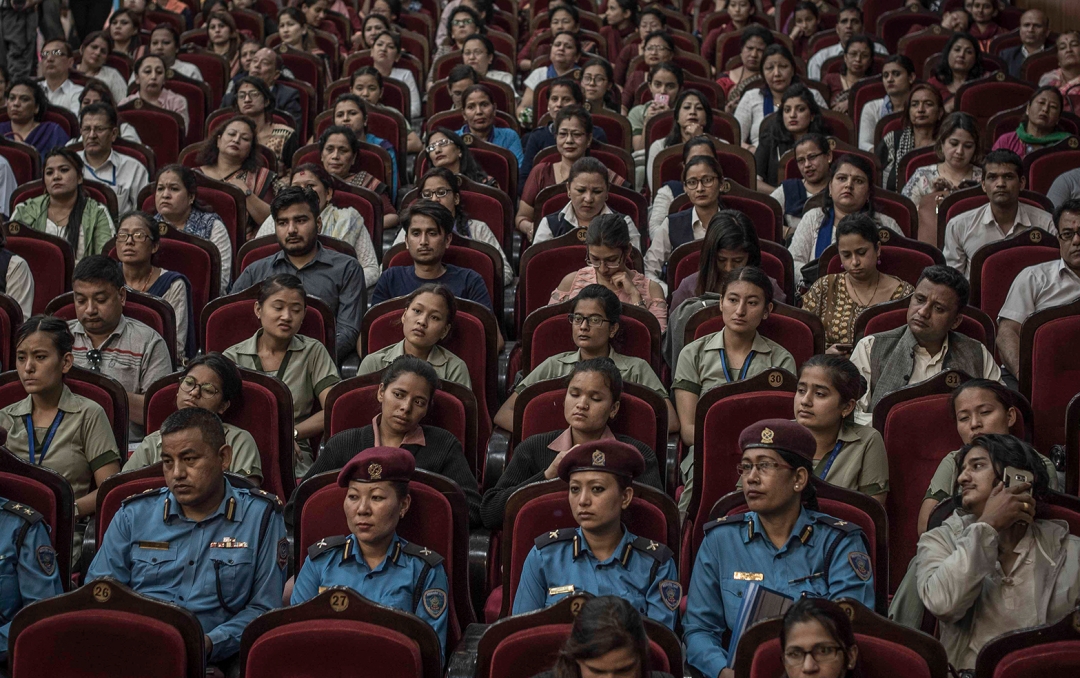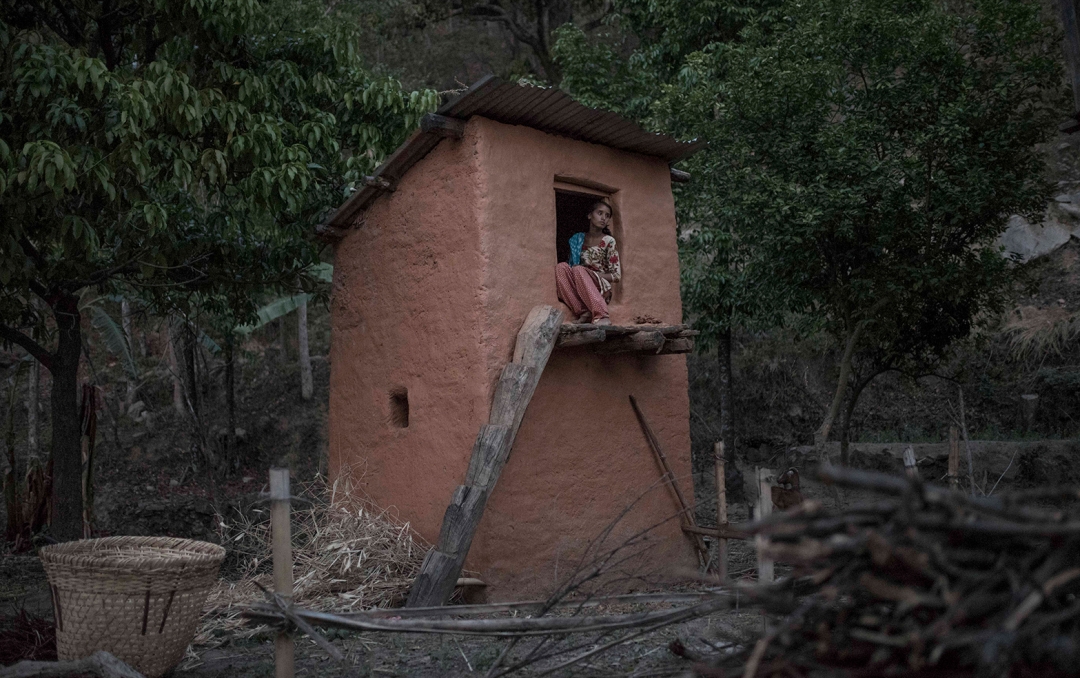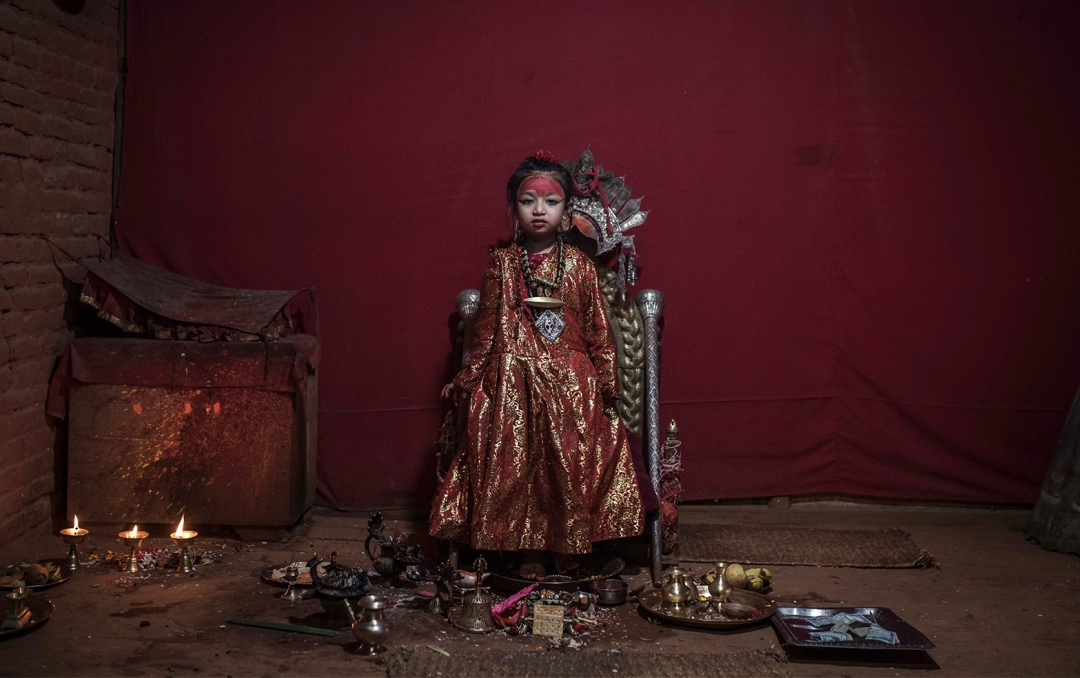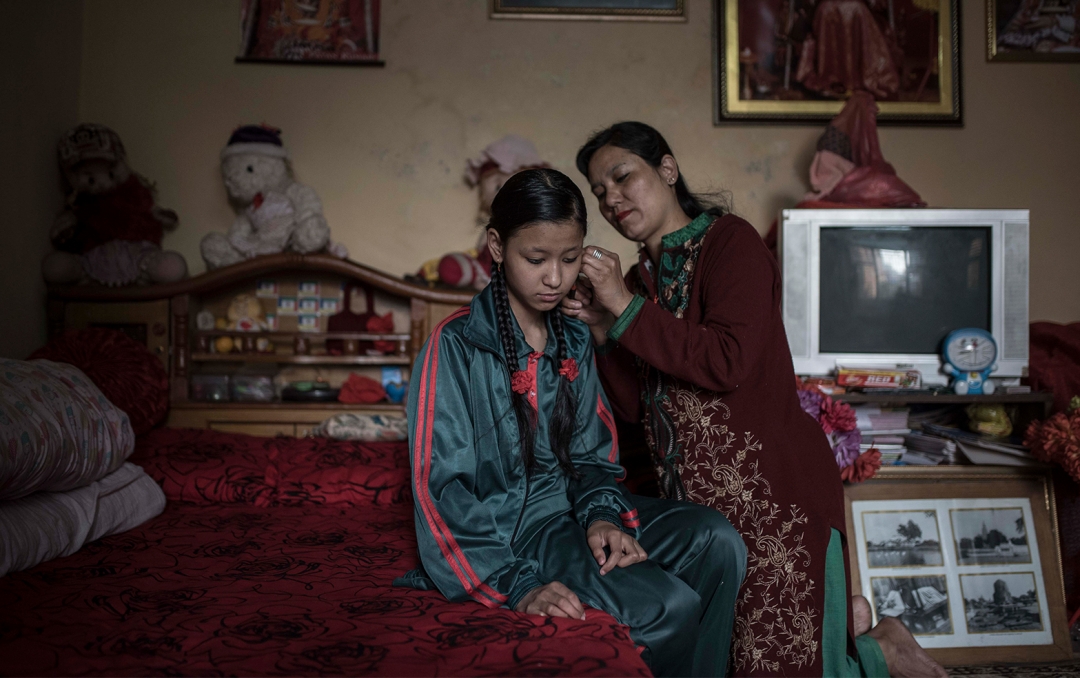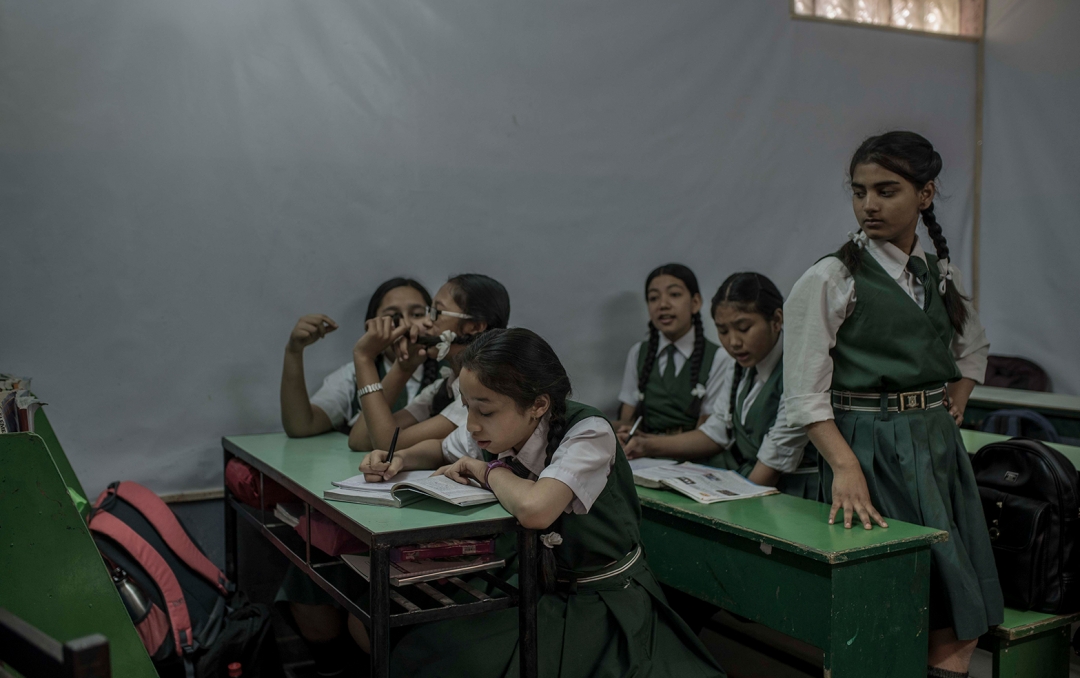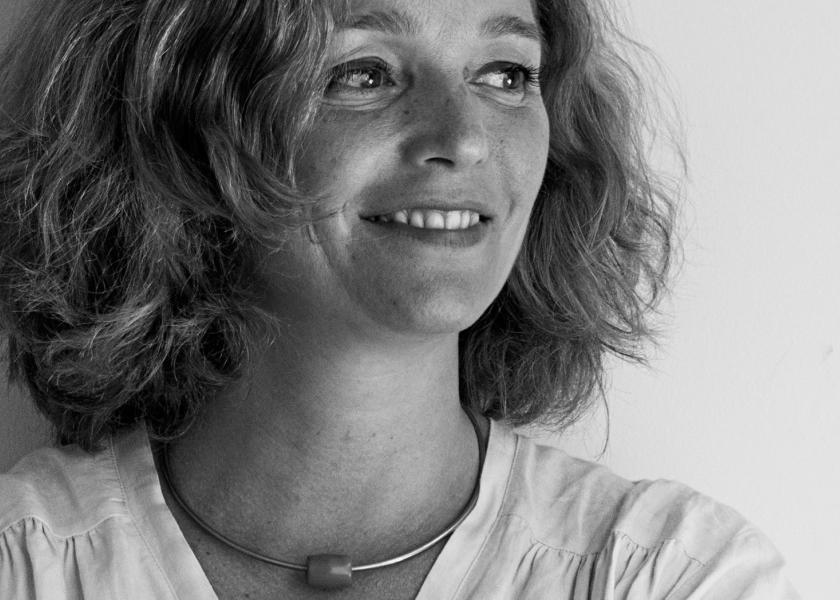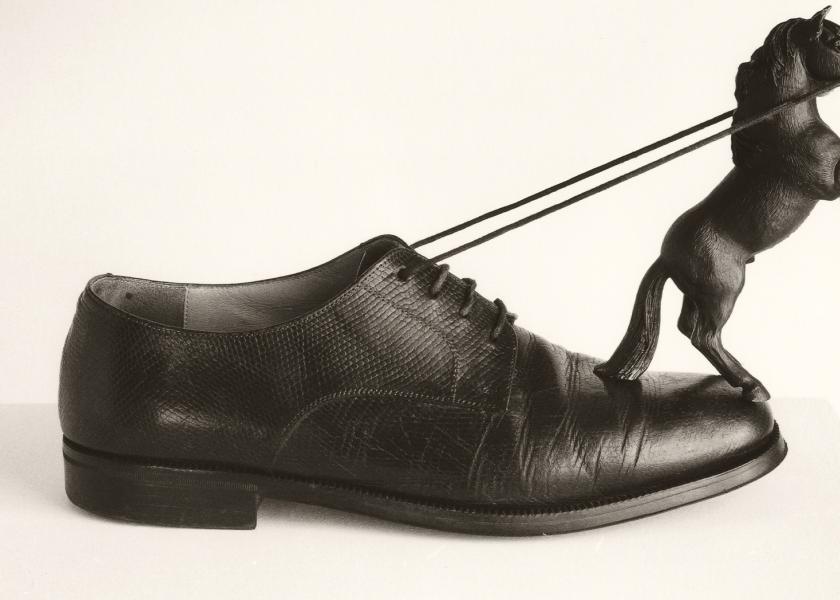Maria Contreras Coll
The Gaze that Humanizes Tragedy
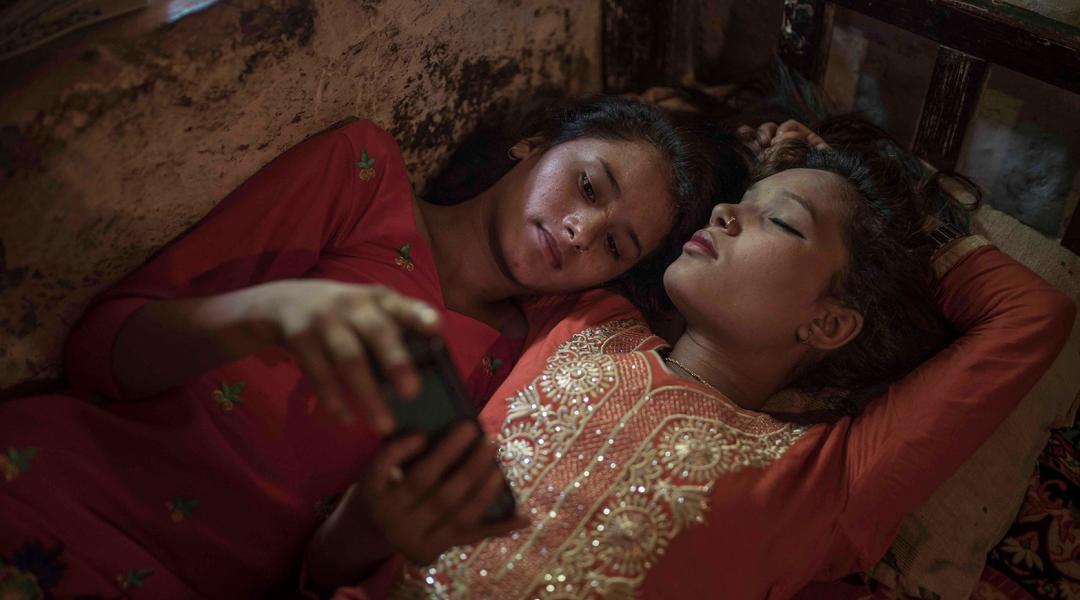
From refugee camps to Nepal’s rural heartland, photographer María Contreras Coll casts an intimate look into the faceless stories of forgotten people. Her gender perspective fights the rockstardomness prevailing in traditional photojournalism and vindicates women’s photography.
Her camera has portrayed human resilience, from the sexual harassment suffered by female strawberry pickers in Huelva, to Nepali women stigmatized for menstruating. María Contreras Coll (Barcelona, 1991) studied Fine Arts and Photojournalism in Barcelona. Today she is one of the young Spanish photographers who are changing the approach to documentary photography. Recipient of the 1st Joana Biarnés Photographic Social Vision Fellowship and member of the Women Photograph Network, her work has been featured on The New York Times, The Washington Post, El País, and Al Jazeera, among others. She carries perseverance and modesty in her backpack, along with the Nikon D750 and 35mm Sigman lens with which she portrays the story of anonymous people.
Your passion for photojournalism appeared soon, at the age of 14. How is such a precocious talent possible?
There was a digital camera at home that we used for our vacations, barbecues and so on — all very amateur. I used to live in a small town where you could play in the street because there were hardly any cars. I remember the excitement upon realizing I couldn't see car light trails with my eyes, unlike my camera, which registered all those red and white lines. It was like magic to me! Then, at 15, I went on a family trip to Morocco, which I experienced through my camera. That’s where I discovered that I wanted to dedicate myself to this.
A degree in Fine Arts, a postgraduate degree in Photojournalism... But the real breakthrough in your career was your project about club kids in Barcelona. How did it come about?
By a curious coincidence. I was taking pictures at the Raval with a fellow graduate student, thinking of photographing street drink sellers. Suddenly I saw this handsome, tall trans boy with a very special light about him. I stopped him and said: "I’m fascinated by you, could I take some pictures?" His name was Albert. The moment I met him, I realized it wasn’t going to be just one photograph, but the first one in a long project I did between 2014 and 2015 and which consisted in following his day-to-day life — out partying, at the gym, at home... He was a before and after in the way I take photographs.
From club kids you went on to photographing refugees in Europe and Nepali girls who are marginalized while they’re menstruating. What stories capture your attention?
Interestingly, there is always a personal reflection that connects me with the people I photograph, which, in turn, allows them to connect with me. Since I was 14 and until I turned 21, I was very into punk. I rejected the system that is imposed on us, and I saw the same in Albert, so I really understood his rejection of the world, his desire to be different while at the same time wanting to fit in society. The project about the Nepali girls came about because my periods have always been very painful, and one day I read a story about a Nepalese rural tradition, the Chhaupadi pratha (the untouchables), that isolated young women while they were menstruating because they were considered “impure”. It wasn’t just about pain anymore — they were also stigmatized by society! When I travelled to Nepal to work on this story, which I titled Journey to Impurity, I was surprised to see that there’s another part of Nepalese society that is fighting against that and for the normalization menstruation.
The New York Times commissioned you with a project about women strawberry pickers in Spain. Is it harder to portray poverty at home?
It's so hard that I still have trouble talking about it. Rather than difficult, it’s disconcerting. Poverty in nearby countries, on the Melilla border in this case, is real, and you come to understand why they have to leave their homes to look for work or even emigrate. It’s a silenced issue that is happening in a neighbouring country, and it deserves to be talked about more often. When you witness certain things, such as the raping, harassment and abuses suffered by seasonal workers in Huelva, perpetrated by men from your own country and in your own country, you feel something between anger and shame. Being able to bring up such issues is gratifying, but at the same time it’s hard to digest.
Your photographic project, which won the Joana Biarnés Fellowship, focuses on sexual violence in Spain. Do you think this project will change anything?
Most of my stories have a purpose. Although I’m not sure photography can generate such an impact in today’s world, at least we’ve put the issue on the map. The project is still in an embryonic phase and it may change along the way. But I was clear that, after the verdict of La Manada [The Wolf Pack, the name of a gang rape case] it was necessary to revisit the problem and expose it. Figures on sexual violence in Spain are not going down. We must understand that this is something that concern us because it’s about our fathers, brothers and sons and the kind of society that we’re building.
You are currently teaching photojournalism. What is the best advice you would give to your students?
It’s very important to believe in your vision, in your project, to knock on all doors and to show your work over and over again. Avoid indulging in the typical “everything is so hard.” Well, it is, indeed. It requires a long-term investment of energy, time, money, zest, creativity. But everything can be achieved with perseverance and humility.
“I’m not sure in today’s world photography can generate such an impact, but at least we’ve put the issue of sexual violence in Spain on the map”
Do you think there’s an innate photographic talent? Can it be trained?
Talent is relative because I see students who shoot great photos on their first attempt but who lack consistency. The best photographers are those who come the first day with a photograph that is not that good, but who try again and again. I strongly believe in years of ongoing effort and work. If you keep on trying, working on projects you feel honestly and sincerely connected with, doing a good job is almost inevitable.
You belong to the international Women Photograph Network. Is there strength in the unity of women?
This is a very lonely profession, and women photographers aren’t visible. Did you see the names of the finalists of the latest World Press Photo? Does that mean no women entered the competition? I think only 20 percent of contestants were women, which is quite a low percentage, and it reflects why we don't feel represented. Being part of the Women Photograph Network allowed me to connect with women from all over the world with whom I shared the same photographic sensibility; before that, I felt very isolated. Like very. I think traditional photojournalism has been defined by a masculine look, the ‘white rock-star photographer’. I’m not interested in that rockstarriness and prominence, and I think my photographer friends aren’t either. We’re a channel whose aim is to amplify a voice that already existed; it’s not that we’re giving voice to the people we photograph. Of course, not all photographers are the same, but I think there is a women photographic trend that is interested in telling stories in a more leisurely, respectful, calm and humane way.
